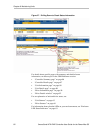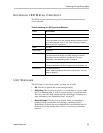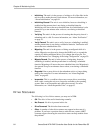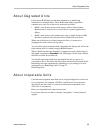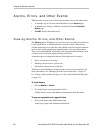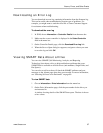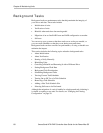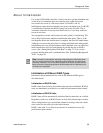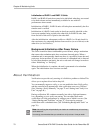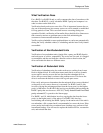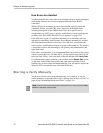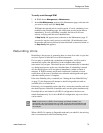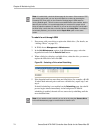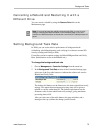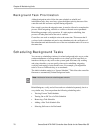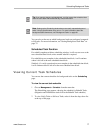
Chapter 6. Maintaining Units
70 3ware Serial ATA RAID Controller User Guide for the Power Mac G5
Initialization of RAID 1 and RAID 10 Units
RAID 1 and RAID 10 units do not need to be initialized when they are created
to be fault tolerant and are immediately available for use with full
performance when created.
Initialization of RAID 1, RAID 10 units will take place automatically the first
time the unit is verified.
Initialization of a RAID 1 unit results in data from one disk (the disk on the
lower port number) being copied to the other disk. In RAID 10 units, data
from one half of the unit is copied to the other half.
After the initialization, subsequent verifies to a RAID 1 or 10 unit check for
data consistency by comparing the data from one drive (or set of drives) to the
other drive (or set of drives).
Background Initialization After Power Failure
The 3ware controller detects and handles power failures, using a mechanism
that ensures that redundant units have consistent data and parity. When a
redundant unit is unexpectedly shutdown, there is a possibility some data and
parity may be inconsistent. If a unit or sub-unit of a redundant unit is detected
to have been shutdown uncleanly, the unit or sub-unit will change its mode to
either ‘Initializing’ or ‘Verifying.’
When the initialization is complete, the unit is guaranteed to be redundant
again. The initialization does not erase user data.
About Verification
Verification can provide early warning of a disk drive problem or failure.This
allows you to replace drives before they fail.
You can manually request a verify, or you can enable the Auto Verify policy,
and the controller will automatically start verification once every 24 hours.
(See “Starting a Verify Manually” on page 72 and “Setting Auto Verify for a
Unit” on page 46.)
During verification, I/O continues normally, but with a slight performance
loss, depending on your verify rate setting. You can adjust how much
verification will slow performance by setting a rate at which it occurs. (See
“Setting Background Task Rate” on page 75.) You can also postpone
verification until a scheduled time. (See “Scheduling Background Tasks” on
page 76.)
Note: Not verifying the unit periodically can lead to an unstable array unit and may
cause data loss.
It is strongly recommended that you schedule a verify at least 1 time per week.



